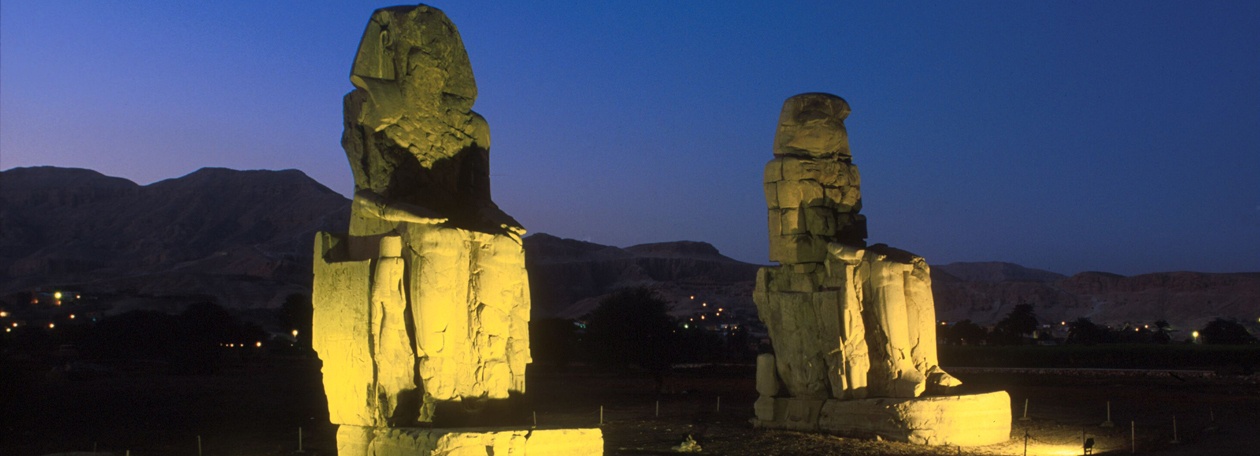Colossi of Memnon - Thebes West, Egypt

Damaging dirt deposits removed
The Colossi of Memnon in Thebes West, near the Valley of the Kings, are among the largest and most significant statues of ancient Egypt. The two 3,300-year-old, over 800-tonne stone figures once guarded the entrance to the memorial temple of Amenhotep III, of which very little remains. As part of various different conservational investigations and measures, dirt deposits which had attacked the surface of the stone were also removed from the monoliths, which are sitting statutes. This work was undertaken by experts from the cleaning machines manufacturer Kärcher, commissioned by the Egyptian antiquities authority under the direction of Prof. Stadelmann, former director of the German Archaeological Institute in Cairo.
Both monuments, which are over 14 metres high and made of quartzite, depict the Pharaoh Amenhotep III and once stood in front of the first pylon of perhaps Egypt's largest ever temple. The solid dirt encrustations which had formed over the centuries were putting the stone at risk of fissures caused by salt crystallisation.
Removing the layer of dirt that was damaging the stone, and hence preventing the monuments from further decaying, was the main aim of the cleaning work which was overseen from a technical point of view by qualified restorer Jens Linke from Mellingen. A particle-blasting procedure using ultra-fine ground calcium carbonate (grain size 0.04 - 0.14 mm, Mohs hardness 2.5) was chosen. The encrusted dirt was removed layer by layer with a Kärcher jet gun with which the air pressure and amount of spray agent can be carefully controlled using the handle. This afforded the team flexibility in the way that they cleaned the Colossi as there were huge variations in the resilience of different sections of the stone's surface. Surprisingly, remnants of the original paintwork were discovered and subsequently carefully exposed without damaging them.







